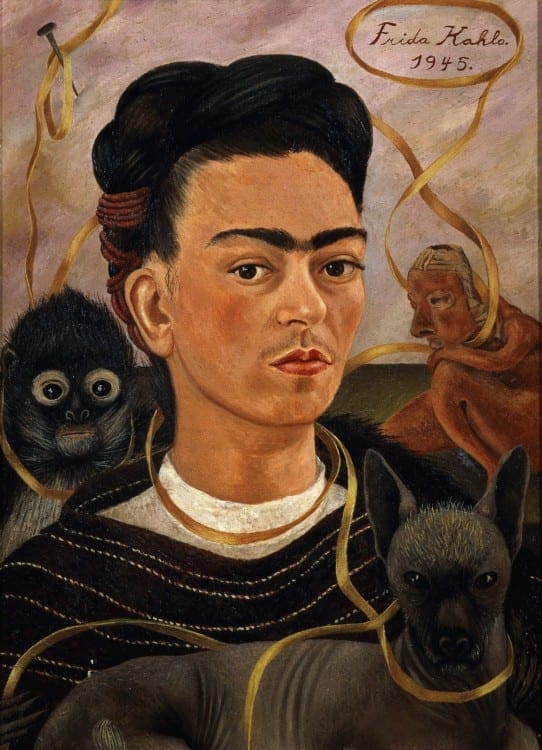Ancient objects that appear in Frida Kahlo’s (1907-1954) paintings have rarely been exhibited alongside her work. Yet, by her own account, ancient art was instrumental in her efforts to define herself and her national identity. M&S student Alison Tretter’s Capstone exhibition, “Frida Kahlo’s Indigenous Identity: Ancient Ceramics in Modern Art” compares four objects from the Johns Hopkins Archaeological Museum’s ancient Americas collection with three of Kahlo’s paintings in order to highlight the artist’s personal relationship with Mexican material culture. Associated text explains how Kahlo asserted her indigenous roots during the proto-nationalistic indianist movement that swept Mexico City during the 1920s and 1930s. The exhibition aims to draw attention to the rich legacy of ancient West Mexican art, particularly the sculptural ceramics of Jalisco and Nayarit. Its focus encourages visitors to better understand the artifacts that shaped Kahlo’s Mexican indigenista persona, and in turn, furthers the conversation about the impact of ancient objects on contemporary culture.
“Frida Kahlo’s Indigenous Identity: Ancient Ceramics in Modern Art” is on display in the Johns Hopkins Archaeological Museum until April 16, 2016.
Image:
Frida Kahlo, Self Portrait with Small Monkey, 1945, Oil on masonite, 16” x 22”, Photo Credit: Gianni Dagli Orti, ©2015 Banco de México Diego Rivera Frida Kahlo Museums Trust, Mexico, D.F./Artists Rights Society, New York.
